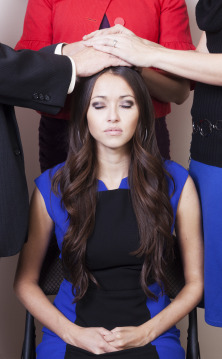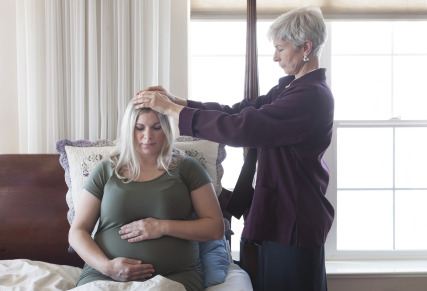I read with sadness this morning that one of the board members of Ordain Women was recently given a choice by her stake president: either quit the board and take down all of her past posts that advocate for Mormon women’s priesthood ordination, or else lose her temple recommend.
“I do not believe that temple recommends should be used as leverage to censor ideas or silence advocacy, but if I hadn’t complied, I would have missed my brother’s recent temple wedding,” wrote April Young Bennett at the Mormon feminist blog The Exponent.
Bennett’s post doesn’t sound angry, just resigned. Her stake president is a good man, she says:
He has told me that during his long career as a lawmaker, he was able to have good relationships with people with whom he disagrees. As a lawmaker, he demonstrated egalitarian ideals, placing women in leadership positions and sponsoring legislation that ensured open, transparent government and freedom of the press. It saddens me to observe that he now feels obligated to censor me for expressing the opinion that women should participate in religious governance.
That last line gets to the heart of what this is all about, doesn’t it? Bennett has publicly expressed an opinion that says that women should share in the leadership of the church. That’s all she has done. And she has been silenced for it.
Happily, her experience is not the norm; most of the women and men who have come out as publicly supporting female ordination have retained temple recommends and church callings. At least one committee chairperson at Ordain Women is a current Relief Society president.
A post by Debra Jenson today notes that of more than 600 people who have submitted profiles to the Ordain Women website, only about 20 have suffered from formal discipline (excommunication or disfellowshipment, as decided by a church court) or informal discipline (which might include losing a calling or temple recommend, and is at the discretion of a bishop or stake president). That’s only three percent, but even this number makes me grieve.
So much depends on local leadership roulette.
But the fact that such discipline can happen at all reveals an undercurrent of fear. What, exactly, is the Church afraid of?
Yesterday the Huffington Post ran a story about a new initiative by Ordain Women to present photographs of women giving blessings. No words were said when these various tableaux were staged, so they were not “real” blessings, but the images are powerful. (Three of them are used here with permission; click here to see the whole series.)
What’s especially compelling about them is not that they point to some pie-in-the-sky future of Mormon women being able to give priesthood blessings someday, but that they recall an actual flesh-and-blood past in which Mormon women did precisely that.
I hope the Ordain Women photographs raise awareness that Mormon women did exercise some of the functions of priesthood for many years. An ample historical record attests to women laying hands on one another for healing in Relief Society meetings, blessing each other before labor and delivery, and blessing their children in times of illness or hardship. Joseph Smith, when asked about these practices, replied that “If the sisters should have faith to heal, let all hold their tongues.”
These female blessings continued into the early twentieth century, an inconvenient truth that begs a question: If a strong historical precedent exists for women exercising some of the functions of priesthood, the argument that female priesthood violates not only current policy but timeless doctrine begins to wear thin.
As the issue and its history begin to be more widely discussed, I pray for safety and openness, such as I have experienced with several different bishops as I have raised concerns about women’s roles. As Debra Jenson says, “Most bishops and stake presidents not only welcome the participation of the women in their congregations who are questioning gender inequality in the Church, but they also listen . . . . They have remembered the new commandment, given by the Savior, that we love one another, as He has loved us. When our leaders act out of love, they need not fear us nor we them.”









